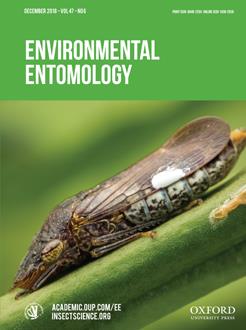Termites and fungi are the primary decomposers of dead wood. Interactions between wood-feeding termites and wood-rot fungi are inevitable given their shared food source. Termites have developed multiple defense strategies against infectious fungi, such as Metarhizium spp., that include antifungal proteins in their saliva and fungal inhibition properties in their gut. The antifungal properties of termite salivary secretions depend on β-1,3-glucanases that are likely to be effective against a broad spectrum of filamentous fungi. Given the overlap in niches, there is opportunity for interference competition between termites and wood-rot fungi to occur. Here we demonstrate that β-1,3-glucanases in the saliva and the antifungal properties of the gut of the eastern subterranean termite Reticulitermes flavipes (Kollar) (Blattodea: Rhinotermitidae) affects the growth of two common wood-rot fungi, Gloeophyllum trabeum Persoon (Murrill) (Gloeophyllales: Gloeophyllaceae) and Phanerochaete chrysosporium (Burdsall) (Polyporales: Phanerochaetaceae).
How to translate text using browser tools
6 September 2018
A Lab-Based Study of Temperate Forest Termite Impacts on Two Common Wood-Rot Fungi
Jason S. Martin,
Mark S. Bulmer
ACCESS THE FULL ARTICLE
It is not available for individual sale.
This article is only available to subscribers.
It is not available for individual sale.
It is not available for individual sale.

Environmental Entomology
Vol. 47 • No. 6
December 2018
Vol. 47 • No. 6
December 2018
antimicrobial peptide
subterranean termite
termicin
Trichoderma sp
β-1,3-glucanase




